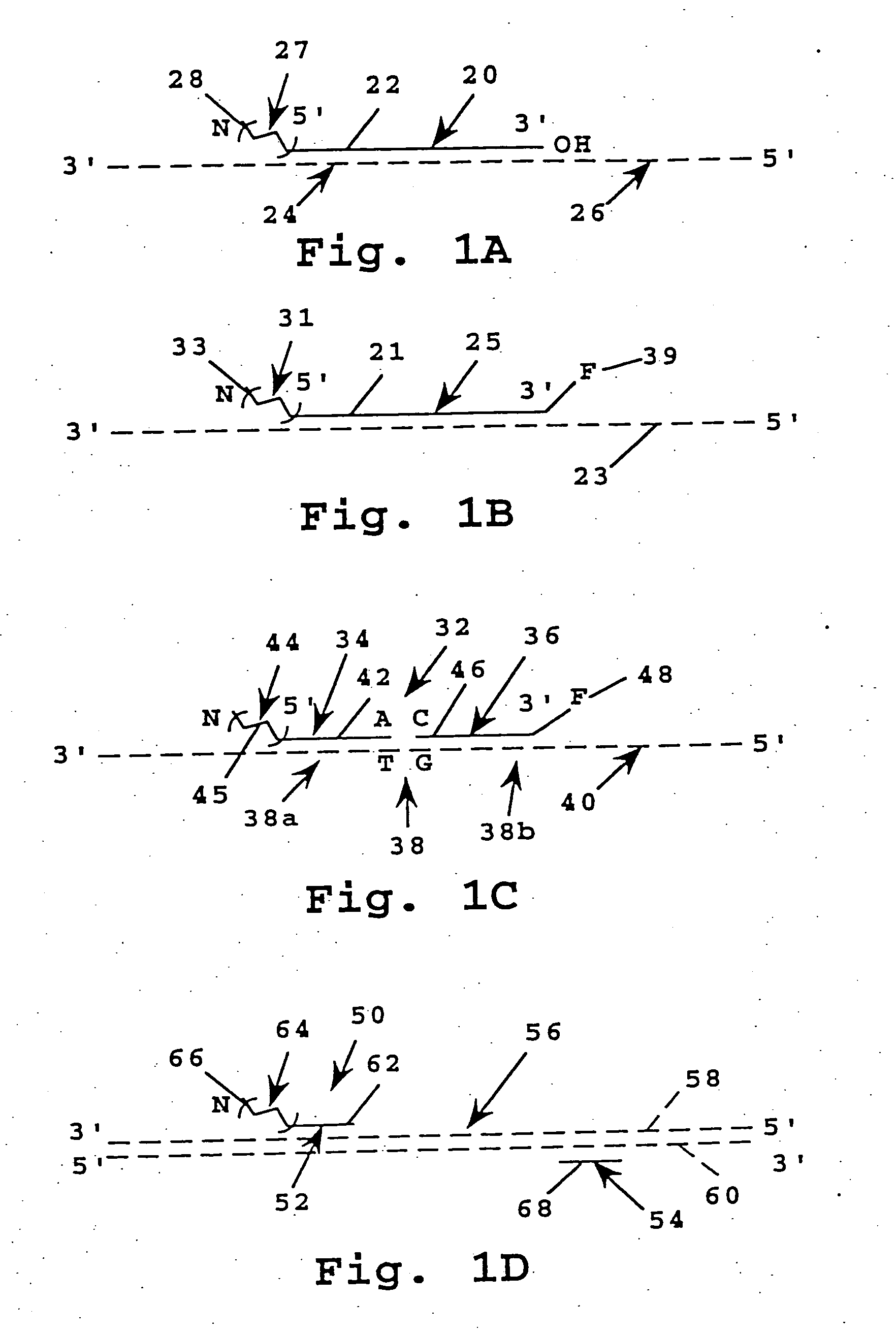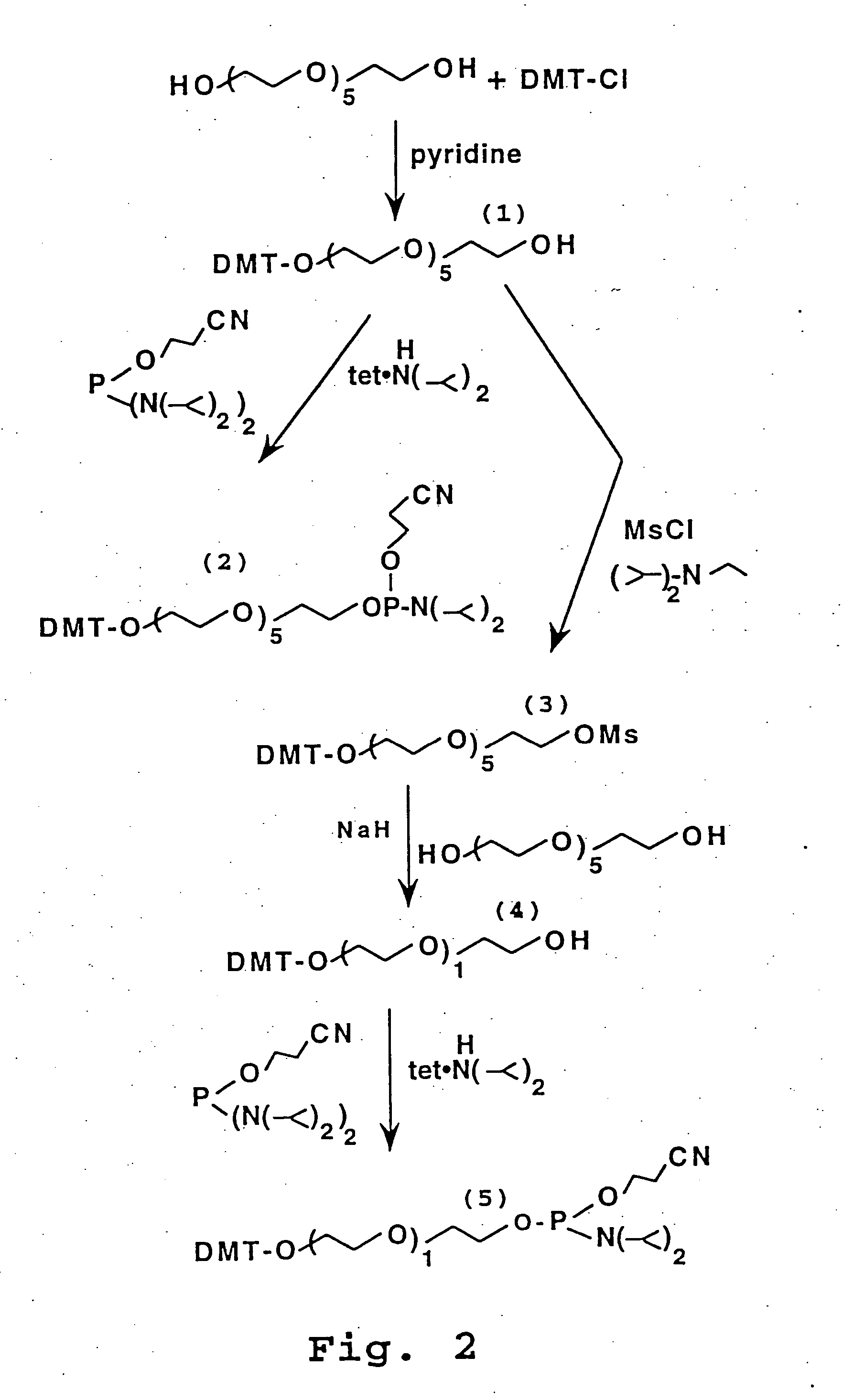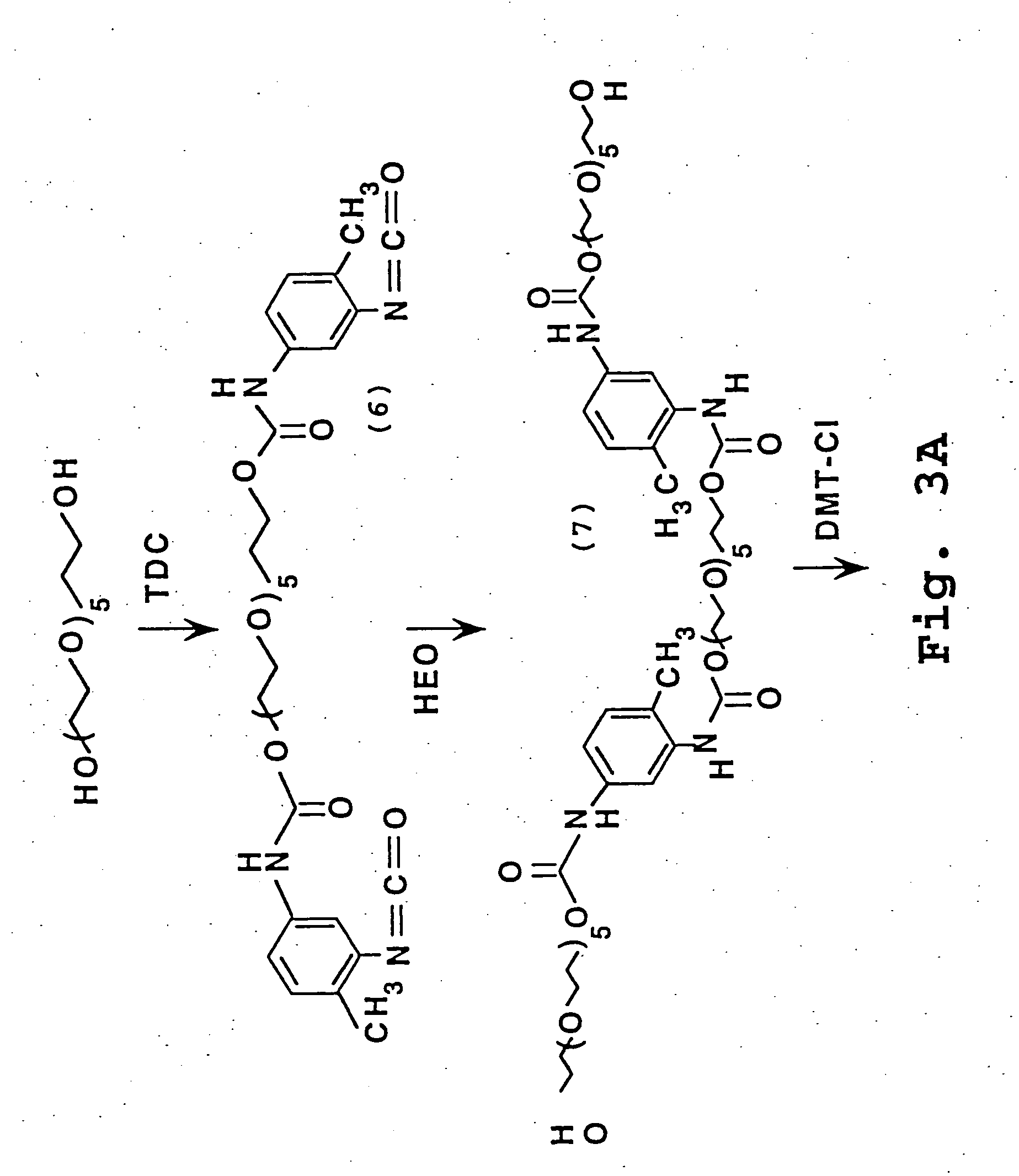Probe composition and method
a technology of composition and probe, applied in the field of probe composition and method, can solve the problem that the prior-art methods described above are not readily adaptable to us
- Summary
- Abstract
- Description
- Claims
- Application Information
AI Technical Summary
Benefits of technology
Problems solved by technology
Method used
Image
Examples
example 1
Synthesis of (HEO)N Chains
[0200] The reactions described in this example are illustrated in FIG. 2 and are similar to those of Cload and Schepartz.
[0201] A. Dimethoxytrityl (DMT)-Protected Hexaethylene Oxide (HEO)
[0202] 27.0 gm (95.6 mmol) of HEO was dissolved in 100 ml pyridine. To this solution at room temperature was added a solution of 27.0 gm (79.7 mmol) of dimethoxytrityl chloride in 150 ml pyridine over 10 hr. The reaction was stirred at room temperature overnight (15 hr.) The solvent was removed in vacuo and the residue was brought up in 150 ml EtOAc and 100 ml H2O, 2×100 ml brine and the organic layer was dried over Na2SO4. The solvent was removed to give a dark orange oil (38.36 gm). The crude material was purified by silica gel chromatography using 200 μm kiesel gel 60 and eluting with 2% methanol-methylene chloride (silica gel was basified with triethylamine). Appropriate fractions-were combined to give 29.52 gm (50.49 mmol) of compound 1. Analysis of the OMT-protecte...
example 2
Synthesis of (HEO)N Chains Linked by Bisurethane Tolyl Groups
[0214] The reactions described in this Example are illustrated in FIG. 3.
[0215] Hexaethylene glycol (10.0 ml) was added dropwise to tolylene-2,4-diisocyanate (TDC) (17.0 ml) under argon at 30-35° C. An ice bath was used to control the exothermic reaction. The reaction was allowed to stand at room temperature overnight; washed with hot hexane (10×) to remove excess diisocyanate; and concentrated under reduced pressure to yield the crude bisisocyanate product (compound 6, FIG. 3) as an amber oil (30 g).
[0216] A solution of the above crude bisisocyanate (2.3 g) and hexaethylene glycol (7.0 ml) in dichloromethane (25 ml) was stirred at room temperature for 1 hour and then dibutyltindilaurate (0.1 ml, Aldrich) was added and stirred at room temperature for 22 hours; diluted with dichloromethane and washed with water (4×20 ml); dried (MgSO4) and concentrated under reduced pressure to give the crude diol product (compound 7, FI...
example 3
Derivatization of Oligonucleotides with PEO Chains
[0219] The reactions described in Sections B and C are illustrated in FIGS. 4A and 4B, respectively.
[0220] A. Preparation of Oligonucleotide
[0221] A 48-base oligonucleotide having the sequence 5′GCACCATTAAAGAAAATATCATCTTTGGTGTTTCCTATGATGAATATA carboxyfluorescein-3′ (composition 10 in FIG. 4A) was prepared using a 3′-linked carboxyfluorescein polystyrene support (Applied Biosystems, Inc.) or can be prepared using 3′-Amine-ON CPG (Clontech, Palo Alto, Calif.) and FAM-NHS (ABI) according to published methods (Applied Biosystems, Caruthers, Connell) and standard phosphoramidite chemistry on an Applied Biosystems 380B DNA Synthesizer.
[0222] B. Oligonucleotide Derivatized with PEO Chain
[0223] The support-bound oligonucleotide from Example 3A above (0.1 μmol oligonucleotide) was deprotected by reaction with trichloroacetic acid, washed, then reacted with one of the phosphoramidite-PEO polymers as in Example 1, using a standard DNA synt...
PUM
| Property | Measurement | Unit |
|---|---|---|
| thickness | aaaaa | aaaaa |
| pH | aaaaa | aaaaa |
| flow rate | aaaaa | aaaaa |
Abstract
Description
Claims
Application Information
 Login to View More
Login to View More - R&D
- Intellectual Property
- Life Sciences
- Materials
- Tech Scout
- Unparalleled Data Quality
- Higher Quality Content
- 60% Fewer Hallucinations
Browse by: Latest US Patents, China's latest patents, Technical Efficacy Thesaurus, Application Domain, Technology Topic, Popular Technical Reports.
© 2025 PatSnap. All rights reserved.Legal|Privacy policy|Modern Slavery Act Transparency Statement|Sitemap|About US| Contact US: help@patsnap.com



